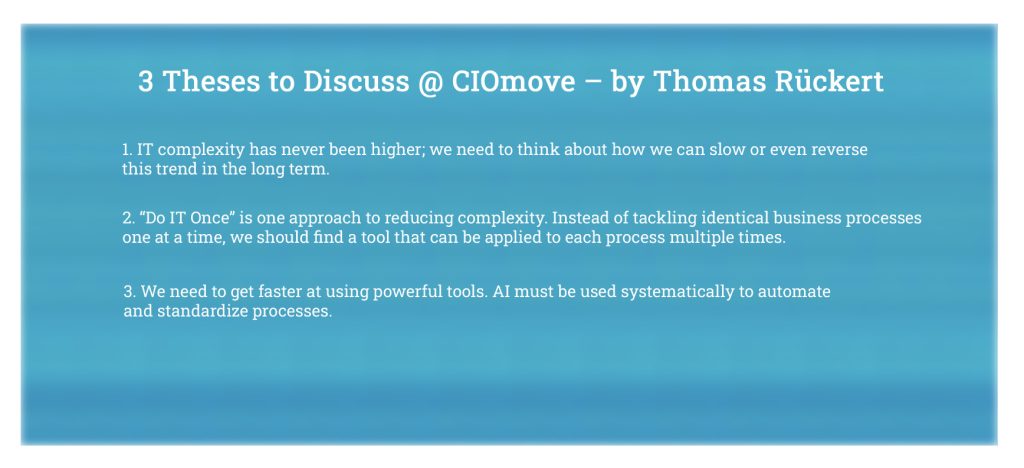
Thomas Rückert has been CIO of the Lufthansa Group since 2021. Since then, the airline group has made customer-centric digitalization a key focus. In our interview, Thomas Rückert explains what customer centricity means for one of Europe’s leading aviation groups in the age of AI and automation, and how Lufthansa Group airlines are combining traditional and digital communication channels to improve their service quality.

CIOmove: When you took on the role of CIO of the Lufthansa Group in 2021, one of your main tasks was to support the Group’s airlines in making digital communication channels and services more customer centric. How has the interaction between the Lufthansa Group’s airlines and their customers changed in recent years?
Rückert: In the last year and a half in particular, we have achieved a significant shift. We are developing functions across the board for all airlines in the Group and are working specifically on the actual needs of our customers. As a result, we are now a leader in customer self-service. Previously, customers had to call the call center for special requests, such as booking a pet in the cabin or a surfboard. Depending on the time of day and season, this resulted in wait times that annoyed our customers. By improving our digital services, we have already been able to reduce this significantly. We give our customers exactly the solutions they want. Our IT and business colleagues work together across functions and on an equal footing, which also makes us much faster. Together, we develop the digital offerings that deliver the most value to our customers. This progress has been important to me from the beginning.
CIOmove: What does this mean for the service quality?
Rückert: It’s about the intelligent mix of digital products and the service of our employees: Combining the skills of these two components in such a way that we can implement the best of both worlds in favor of our goal of creating unforgettable moments for our customers. For example, if customers have shared their birthdays with us, our colleagues on board can prepare a little birthday surprise.
CIOmove: What do you think about AI-based bots, which are being used by more and more companies?
Rückert: Intelligently designed bots are a good support for all customers who like to help themselves quickly. It is important that the bot recognizes the customer’s situation and which solutions are interesting and attractive. Our chatbot makes offers that help our customers quickly find alternative flights or train connections that will get them to their destination in the event of irregularities such as weather-related delays or cancellations. An AI-based bot needs to keep an eye on the big picture, take transfer times into account and, of course, be easy to use. Well-designed bots can free up call center agents to spend more time handling complex requests.
CIOmove: Do you also use internal AI tools to provide information to employees?
Rückert: Yes, we have a closed ChatGPT “instance” in a prominent place on our intranet homepage. It is important to us that our employees engage with AI, get to know the tool, and know that they can enter confidential data in a secure area. In doing so, they learn how to use AI productively and successfully in their own work.
CIOmove: Some employees have high expectations for AI tools and are sometimes disappointed when they do the reality check. Others know what the tools can and cannot do and integrate them into their daily work accordingly. How have you experienced this in your environment?
Rückert: Of course there is a lot of hype, a lot of fantasy about things that are not yet possible. At the same time, there is a lack of imagination about what is already possible. I agree with Gartner that this is the most important generic tool to come to market in decades. The range of applications is already vast. At CIOmove last year, I gave an example from marketing: We created two marketing newsletters, one using AI and one using our marketing experts. We analyzed the click-through rates after we sent them, and the AI-generated newsletter actually got 50 percent higher click-through rates. In other words, it’s the mix that makes the difference: our marketing experts are using AI tools to market interesting content more successfully, save time in the creation process, and at the same time fulfill their goals more successfully. These are great learning examples that all employees can use to grow and become more confident in their use of AI tools.
